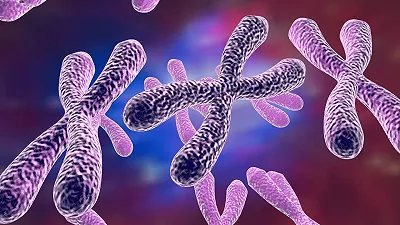[image]https://leganerd.com/wp-content/uploads/LEGANERD_031211.jpg[/image]
[quote]Researchers at Brown University have developed the first ‘artificial ovary’ – a completely functional unit capable of in vitro oocyte maturation. The development of an artificial human ovary will allow investigators to study the complex interactions of the three functional ovarian follicle cell types under a variety of conditions in the laboratory, and could have a great impact on the future of fertility treatments. The group suggests that their work may benefit reproductive-age women who would like to conceive after undergoing chemotherapy or radiation treatment for cancer. Such regimens may be lifesaving, but are often toxic to ovarian folliculogenesis.
To accomplish this feat, the group applied methodology previously developed by coauthor Jeffrey Morgan in creating “3D Petri dishes” – micro-molded agarose gels that provide the scaffolding needed for successful self-assembly of the 3D microtissues. This application of 3D tissue engineering allows the ovarian cell types to assemble and function as they do in vivo.
More from Brown:
To create the ovary, the researchers formed honeycombs of theca cells, one of two key types in the ovary, donated by reproductive-age (25-46) patients at the hospital. After the theca cells grew into the honeycomb shape, spherical clumps of donated granulosa cells were inserted into the holes of the honeycomb together with human egg cells, known as oocytes. In a couple days the theca cells enveloped the granulosa and eggs, mimicking a real ovary.
The big test, however, was whether the structure could function like an ovary — namely to mature eggs. In experiments the structure was able to nurture eggs from the “early antral follicle” stage to full maturity.
“[This] represents the first success in using 3-D tissue engineering principles for in vitro oocyte maturation,” the researchers wrote in the journal article.
Press release: [url=http://news.brown.edu/pressreleases/2010/09/ovaries]Researchers build ‘artificial ovary’ to develop oocytes into mature human eggs…[/url]
Article in Journal of Assisted Reproduction and Genetics: [url=http://www.springerlink.com/content/9t612k868w3263g1/fulltext.html]In vitro maturation of oocytes via the pre-fabricated self-assembled artificial human ovary[/url]
[/quote]
Fonte.
Utilizzando cellule di donne in età fertile, i ricercatori della [b]Brown University di Rhode Island[/b] (guidati da [b]Sandra Carson[/b]) son riusciti a ricreare un’ ovaia artificiale tramite una tecnica di ingegneria dei tessuti detta tridimensionale.
Finchè gli [b]ovociti[/b] non sono ancora pronti per esser impiantati nel grembo materno, quest’ ovaia artificiale può ospitarli facendoli sviluppare.
Ciò permetterà a donne che hanno subito danneggiamenti all’ aparato riproduttivo (per esempio a causa di sessioni chemioterapiche) nuove possibilità di concepimento.
In pratica, prima di iniziare le cure contro il cancro, alle donne vengono espiantati degli ovociti che, una volta congelati, vengono impiantati nell’ ovaia esterna.






